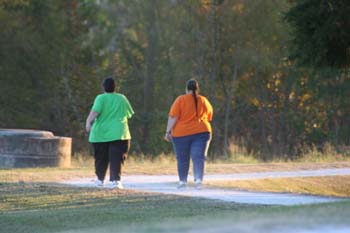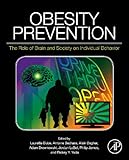Obesity Prevention - How to Develop A Successful Strategy?

Increasing number of obese people is a serious problem in all developing and developed nations of the world. Worldwide obesity is nearly doubled since 1980 and in many countries obesity becomes the cause of more deaths than underweight. As per the statistics of 2013, 42 million children under the age of 5 were obese.
Normally body mass index (BMI) is using to measure the overweight and obesity in adults. As per the guidelines of WHO, if the BMI is equal or more than 25, it is overweight and if the BMI is equal or more than 30, it is obesity. The following table gives WHO body mass index cut off points:
Category
| Body Mass Index (BMI)
|
|---|---|
Very Severely Underweight
| Less than 15
|
Severely Underweight
| From 15.0 to 16.0
|
Underweight
| from 16.0 to 18.5
|
Normal (Healthy Weight)
| From 18.5 to 25
|
Overweight
| From 25 to 30
|
Moderately Obese
| From 30 to 35
|
Severely Obese
| From 35 to 40
|
Of course there are exceptions also to this rule. Body builders, elders, pregnant women and patients who undergoing thyroid gland treatment and those who are taking antipressants, antipsychotic drugs are not included in this common rules of obesity measurement.
Global Obesity

Obesity Causes
Over consumption of fat rich foods and physical inactivity are the main reasons of obesity. Easy availability of the energy-rich foods and the sedentary nature of the present jobs are working as catalysts for making overweighed or obese persons. But along with these facts, some other factors such as genetics, environment, metabolism, eating disorders and certain medical conditions also have their own contributions to this social problem.
In addition to the above, there are some medical conditions such as hypothyroidism, depression, Cushing’s syndrome etc. increase body weight. Hypothyroidism is the low production of hormone by the thyroid gland and this will slows the metabolism process, resulting in weight gain. Cushing’s syndrome is the excess production of hormone by adrenal glands which leads to the fat build-up in face, abdomen and upper back. Depression, in some people becomes a reason to consume more quantity of food and this may lead to overweight.

Obesity Facts - Risks Associated with Obesity
Many physical disorders are directly related to obesity and several existing diseases will show more discomforts, if the patient is accumulating more body weight. Some of the diseases that have direct link to obesity are cardiovascular diseases (heart disease and stroke), diabetes, cancers (breast, colon and endometrial) and musculoskeletal problems (joint degeneration and osteoarthritis). Gall stones and insulin resistances are also common in obese people. Common risks that are associated with obese people are:
- Cardiovascular Problems
- Diabetes
- Cancers
- Gastro Esophageal Reflux
- Joint Degeneration
- Hypertension
- Gall Stones
- Depression
- Osteoarthritis
- Urinary Valve Problem
- Infertility in Women
- Respiratory Problems
- Sleeping Problems
Obesity in childhood is more serious because it can lead to premature death and disability in adulthood. As stated above, 42 million children under the age of 5 are found obese. Childhood obesity may cause breathing difficulties, hypertension, increased risk of fractures, heart problems and psychological problems in future.
Obesity Prevention - How to Reduce Overweight or Obesity?
Obesity does not happen overnight and its reduction also cannot be done by any quick process. You have to reduce the excess calories in your body by eating low calorie foods or by burning the excess calories by doing more physical activities. The following tables give you a better idea about the consumption and utilization of the calories:
Table I
Total calories consumed through foods
| 2200 to 2500 calories
|
|---|---|
Calories used for normal body functions
| 1200 calories
|
Excess calories stored as fat deposits
| 600 calories
|
Excess calories stored as fat deposits
| 400 to 700 calories
|
RESULT: A Fatty, Obese Body
Table II
Total calories consumed through foods
| 2200 to 2500 calories
|
|---|---|
Calories used for normal body functions
| 1200 calories
|
Calories used for day-to-day activities
| 600 calories
|
Excess calories consumed by exercises
| 400 to 700 calories
|
RESULT: A Slim and Healthy Body

For obesity prevention, creation of awareness about the risk factors of obesity or overweight is the best method to get better participation from the overweighed persons in a society. When people will get enough knowledge about the negative factors of obesity, they will show interest to lose weight. Weight reduction is not an easy method like treating for a common disease.
Better option is to start in younger years itself by taking healthy diet in regular intervals and avoiding fat rich foods and junk foods completely. But most of the obese people are showing interest to reduce their extra weight after the middle age. To attain a normal or healthy weight, they should have to change their life style and eating habits to a great extend. More fruits and vegetables should be consumed and alcohol consumption should be limited. Moderate exercises are compulsory and it should be carried out at least for 30 minutes daily for five days in a week. Quantity of sugar intake also should be reduced.
There are many weight loss plans are available and most of them are useless. No simple method will become useful to reduce your weight, if you are morbidly obese. Individual efforts will not be sufficient in such cases to get the desired results. A combination of different remedial measures is to be taken to get results in severe cases of obesity. These may include diet restriction, medications, regular exercises, surgery and behavior changes.

- Diet Restriction: If you are determined to reduce excess weight, strictly follow the directions of a professional dietitian who will help you to select low calorie diets that will give you the desired result. The calorific values will vary with obese nature of the individuals. Low calories diets are for the supply of 500 to 1000 calories a day and very low calorie diets supply only 400 to 800 calories a day. Do not select these foods by yourself; leave the selection of your diet to some professionals.
- Medications: Drug therapy is also used for weight loss, but negative aspect of this treatment is that the weight will return when you stop taking these medicines. Drugs that are using for the reduction of the weight are orlistat, phentermine, beta-methyl-phenylethylamine and sibutramine. Do not use these medicines without the advice of medical professionals because these drugs can cause serious side effects.

- Exercises: Exercises help you to burn the excess calories, in addition to the many other health benefits. Regular exercises speed up your metabolism. One of the problems of obesity is the lack of physical activities; so you have to do regular exercises if you want to reduce your body weight and also to maintain body weight in healthy limits, after reducing the excess weight.
- Surgery: For the people who are morbidly obese, surgery (known as bariatric surgery) is using for reducing the body weight. The purpose of the surgery is the sealing off the stomach to reduce the quantity of food consumption. Before the surgery you have to undergo a complete medical and psychological pre-evaluation process.
- Behavior Changes: Understanding the risk factors of the weight reduction program and the firm belief in the end result is a must for the success of the program. You should set a goal to achieve any practical result and record the progress in a notebook. Include your family members and friends in the program; their help and support will give you more confidence and speedy result.
Awareness about the negative effects of the obesity to the health is the best motivational factor that will make the people to participate in any weight-reduction program. Without the complete involvement from the affected party, the weight loss program will fail. For the success of obesity prevention in any society, in addition to the individual efforts, complete support from the family members and support from the society is also required.









